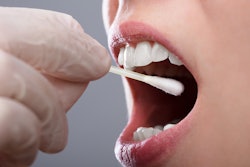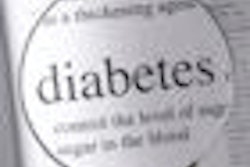
OralDNA Labs recently introduced two tests to the North American market that use saliva to detect periodontal disease. These protocols have been used for a number of years in Europe, but the company claims to be the first to make them commercially available in the U.S.
OralDNA is currently marketing the tests -- MyPerioPath and MyPerioID -- in every U.S. state except New York.
"Saliva is becoming a very important medium, much like blood, in that there is a lot of medical information that can be obtained from it," said Tom Nabors, D.D.S., founder and chief dental officer of OralDNA Labs, in a DrBicuspid.com interview. "We are the first company to offer a true salivary test for the detection of causative agents of periodontal disease."
MyPerioPath detects the presence and quantity of specific bacteria associated with periodontal disease, whereas MyPerioID assesses an individual's genetic risk for periodontal disease. The findings of each test are converted into an individualized report that is sent back to the dentist using a secure Web site.
With MyPerioPath, a bacterial DNA test, the patient is instructed to swish 3 mL of saline around the mouth for 30 seconds, then expectorate into a specimen collection tube that is shipped to the OralDNA laboratory. Genomic DNA is extracted from the submitted sample and tested for 13 bacteria associated with periodontal disease. The bacteria undergo polymerase chain reaction (PCR) amplification, followed by fluorescent end point detection of sample bacterial concentrations.
Why these specific bacteria? Because research has shown that they are key markers of periodontal disease, explained Dr. Nabors.
Genetic predisposition
To help those individuals with a genetic susceptibility to periodontal disease, OralDNA provides MyPerioID. MyPerioID analyzes two human genes for variations that identify an individual's predisposition for overexpression of inflammation and risk for more severe periodontal disease. Genomic DNA is extracted and tested for two interleukin-1 polymorphisms. These polymorphisms are detected via PCR, followed by melt curve analysis.
A 2007 study (Journal of Periodontology, Vol. 78, pp. 79-86) looked at the effectiveness of the PCR technique. The aim of the study was to compare the presence and numbers of Actinobacillus actinomycetemcomitans, Porphyromonas gingivalis, Tannerella forsythensis, Prevotella intermedia, and Micromonas micros in subgingival plaque and mouthwash samples by the anaerobic culture and real-time PCR techniques. Pooled subgingival plaque samples and 10-mL mouthwash samples were collected from 21 adult patients with periodontitis.
"Rapid detection and quantification of periodontal pathogens in mouthwash samples are possible by real-time PCR," the authors concluded. "The procedure is significantly less time-consuming than subgingival sampling with paper points. This approach to detect major periodontal pathogens in mouthwash samples may simplify microbial diagnosis in periodontitis patients and may be used to monitor periodontal treatment."
A more recent study looked at the role that certain bacteria found in saliva play in periodontal disease (Journal of Clinical Microbiology, Jan. 2009, Vol. 47, pp. 235-238).
"We investigated whether certain bacterial species and their combinations in saliva can be used as markers for periodontitis," noted the authors. "In 1,198 subjects, the detection of multiple species, rather than the presence of a certain pathogen, in saliva was associated with periodontitis as determined by the number of teeth with deepened periodontal pockets."
Dental practice benefits
So what are the benefits of incorporating these kinds of tests into a dental practice?
"The more we learn about the oral systemic link, the more important this link is becoming," explained Dr. Nabors. "For example, if we look at the link between diabetes and periodontal disease we know that individuals who have diabetes have a harder time controlling their condition in the presence of periodontal disease."
The tests can become invaluable for people trying to control diabetes, and they can be a useful tool for dentists when communicating with the patient's physician, he added.
The tests also allow a practice to move patients with periodontal disease into a therapeutic stage earlier, which can save them time, money, and discomfort.
"One of the problems is determining whether the patient really has the disease," said Dr. Nabors. "This test gives us the ability to do so. When we think of the value of diagnosing early, it saves the patient time and expense throughout their lifetime."
Insurance is likely to cover the cost of the tests in many cases, but it depends on the insurance company, he added. The cost of conducting each test is $99. The tests are available together for $199.
"A disease like periodontal disease can increase the inflammation burden on the body," concluded Dr. Nabors. "As dental care professionals, it is our responsibility to treat inflammation, and this is a tool that can help."
Copyright © 2009 DrBicuspid.com



















